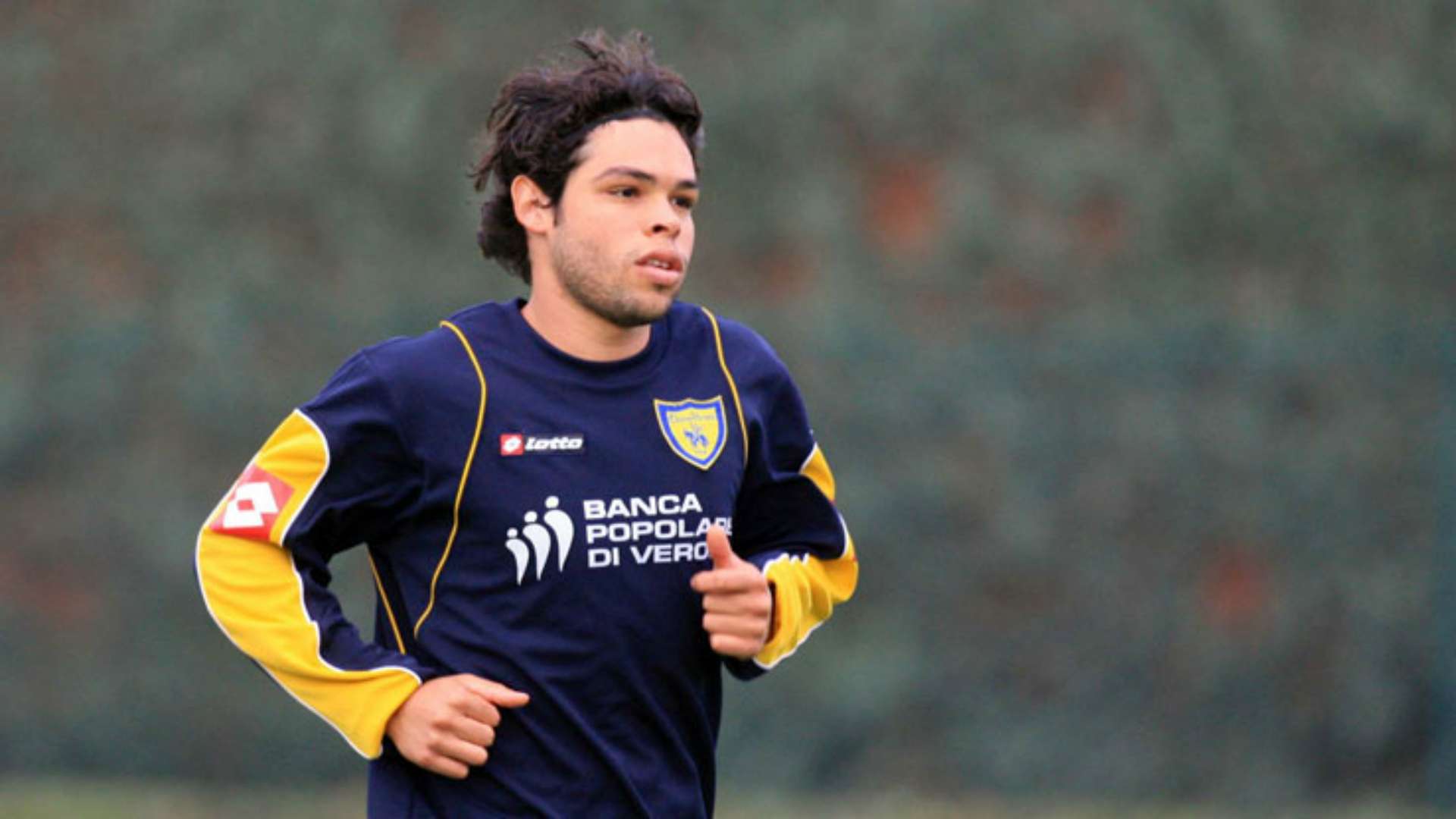Kerlon is something of a mythical figure in world football.
Few fans would remember his clubs, his goals, maybe even his name.
Yet his signature skill remains iconic, a common reference even 15 years later, something that supporters immediately recall with fondness.
Not bad for a player who quit the professional game before he turned 30, and had almost as many surgeries as he scored senior goals.
Kerlon first attracted the world's attention with eight goals in seven games for Brazil at the 2005 South American U-17 Championships to fire his country to the title.
He linked up well with future Man Utd hope Anderson, who scored five at the tournament in Venezuela, while future Real Madrid legend Marcelo played left-back.
It was also then that he unveiled and perfected his main party trick.
The particular skill which he was famous for was the seal dribble (drible da foquinha), where the ball is bounced by the player on their forehead while running.
One of the showiest skills possible, it made Kerlon a target for rough play. Most clips of his trademark skill end in Kerlon being fouled in some way,such as one opponent simply using his elbowto bring a swift end to the fun and games.
His worldwide reputation was established through grainy videos squinted at by millions on slow-loading computer screens.
Kerlon was one of the very first YouTube footballers, a favourite subject of the pioneers of skill compilation videos.
A senior club debut for Cruzeiro followed Brazil U17s' triumph, along with comparisons to Ronaldinho, given their attacking midfield position and penchant for the spectacular.
An inevitable move to European football in 2008. However, it was a complicated deal which saw Serie A sides Inter and Chievo share ownership, due to issues with the number of non-EU player places available in the Milan club's squad.
He then started to suffer repeating knee injuries which stymied his playing time in Europe. IN his debut Serie A season, for Chievo in 2008-09, he played only four times.
He spent three years officially as an Inter player, between 2009 and 2012, but never once played in Serie A for them – a fact that would be obvious from virtually his first day.
Jose Mourinho replaced Roberto Mancini as Inter coach in summer 2009, and Kerlon says he made no bones about what he thought of the Brazilian's first-team chances.
He told FourFourTwo in 2019: "Mourinho called me and said he wanted to talk to me privately. He asked me if I spoke Italian, and I said, ‘Of course, but if you want we can talk in Portuguese’ – after all, it’s our native language.
“‘We're in Italy, so we're going to speak Italian’ he replied, then told me I wasn't part of his plans.
"He said I could stay training apart from the others if I wanted, since I was still under contract.”
Following time on loan with Ajax – in which he was told, shortly after being unveiled by the Dutch club, that he would actually be playing for their reserve team, before being ruled out again with a knee problem – he spent two years back in Brazil in the lower leagues.
However, injuries and reputational baggage weighed him down and Inter let him leave for good in 2012.
Thus began a nomadic spell, with Kerlon lining out for clubs in Japan, USA, Malta, Brazil and Slovakia, but playing sporadically due to further fitness problems before retiring in 2017, aged only 29.
In total, Kerlon had eight different surgeries during his short football career, six of them on his knee.
More than a decade of being fouled by enraged and embarrassed defenders, who had no time for such showboating, had taken its toll on a slight man of around five foot six.
It, therefore, came as no surprise he decided to call it quits.
"I've been injured too many times and for too long," he told VICE five months after retiring. "Especially at my last club in Slovakia I was no longer happy.
"With every three sprints I did, I felt my hamstring. That pain again and again. When I came home after a training or competition, I always immediately looked to my wife for support. I only had pain in my legs.
"I was on a lot of meds for it, but my body said to me, 'Kerlon, I don't want to play anymore.' I was no longer happy. Now I have found happiness again."
Kerlon moved to the US with his family, where he currently works as a football coach, with pictures of his kids and the children he trains adorning his Instagram.
Clips on there also demonstrate he hasn't given up on the skill which made him a viral sensation.
Kerlon may not have hit the heights some expected when they watched those 4x3 YouTube compliations in 2007, but he remains an instantly memorable figure in 21st century football folklore.
If any professional footballer can achieve that, it has been a career well spent.
